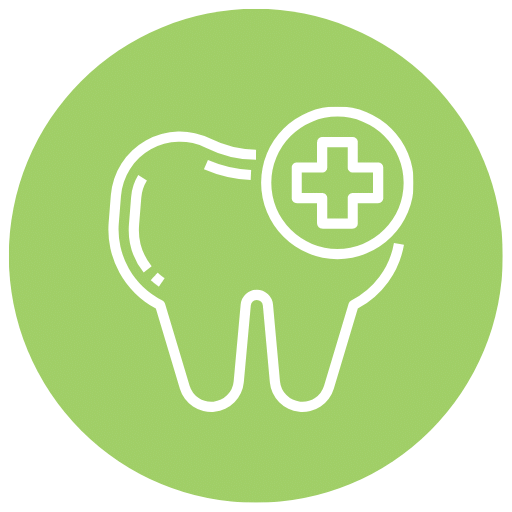In the intricate world of oral health, the presence of the Red Complex bacteria—Porphyromonas gingivalis, Treponema denticola, and Tannerella forsythia—presents a formidable challenge. These bacteria, often found together in periodontal pockets, are recognized as the primary culprits behind adult periodontal disease, leading to the destruction of periodontal ligaments and adjacent supportive alveolar bone. With over 700 bacterial species inhabiting the subgingival plaque, understanding the dynamics of the Red Complex becomes crucial in combating periodontitis.
The Cooperative Destruction:
The Red Complex bacteria are not solitary actors but operate in tandem, suggesting a cooperative mechanism in periodontal tissue destruction. Studies using animal models have revealed synergistic pathogenicity between various combinations of these bacteria, emphasizing the importance of interspecies interactions in oral microbial pathogenesis. Coaggregation, nutrient effects, and modulation of virulence factors further contribute to the collaborative assault on periodontal tissues. Porphyromonas gingivalis, armed with virulence factors like fimbriae and proteases, orchestrates a pathological dance with its counterparts. Research indicates that gingipains (proteolytic enzymes produced by the bacterium Porphyromonas gingivalis) of P. gingivalis play a pivotal role in the synergistic pathogenesis, particularly when in conjunction with Tannerella forsythia. The symbiotic relationship between these bacteria extends to biofilm formation, further complicating the treatment landscape.
Synergy and Immune Response:
In animal models, mixed infections with P. gingivalis and Treponema denticola induce a heightened immune response, exacerbating alveolar bone loss characteristic of periodontitis. The polymicrobial consortium comprising P. gingivalis, T. denticola, and T. forsythia not only enhances colonization but also alters the host immune response, evading protective mechanisms. Such findings underscore the complex interplay between microbial communities and the host immune system in the pathogenesis of periodontitis.
Gums to Heart: Red Complex Bacteria’s Hidden Path
Studies have found the presence of these periodontal pathogens in atherosclerotic plaques of patients with coronary artery disease, which has been detected through molecular analysis, DNA hybridization, and other techniques. Additionally, a study published in Scientific Reports found the presence of periodontal pathogenic bacteria, including members of the red complex, in the blood of patients with coronary artery disease. These evidences suggest the role of red complex bacteria in the potential link between periodontitis and cardiovascular diseases.
Towards Novel Therapeutic Avenues:
Understanding the intricate relationships within the Red Complex opens doors to novel therapeutic strategies for periodontitis. Inhibition of adherence using antagonists, passive immunization, and regulation of non-pathogenic bacteria hold promise in modulating virulence. Moreover, the exploration of antagonistic and probiotic bacteria presents an avenue for restoring the balance of the oral microbiota, potentially mitigating the progression of periodontal disease.
Deciphering the enigma of the Red Complex bacteria unveils the intricate web of interactions underlying periodontitis. As we journey into the microscopic world of Red Complex bacteria, it becomes clear that understanding their dynamics is key to preserving our oral health. By staying informed, adopting preventive measures, and embracing a holistic approach to oral care, we can navigate the challenges posed by these microscopic adversaries and pave the way for a healthier smile.
Explore further into the world of periodontal health by visiting www.periofirst.in .Discover our groundbreaking diagnostic test, offering a comprehensive solution for detecting Red Complex bacteria in a single test. Don’t miss out on this innovative contribution to oral health. Visit the website now to learn more!
Reference-
- Mohanty R, Asopa SJ, Joseph MD, Singh B, Rajguru JP, Saidath K, Sharma U. Red complex: Polymicrobial conglomerate in oral flora: A review. J Family Med Prim Care. 2019 Nov 15;8(11):3480-3486. doi: 10.4103/jfmpc.jfmpc_759_19. PMID: 31803640; PMCID: PMC6881954.
https://www.ncbi.nlm.nih.gov/pmc/articles/PMC6881954 - Rao A, D’Souza C, Subramanyam K, Rai P, Thomas B, Gopalakrishnan M, Karunasagar I, Kumar BK. Molecular analysis shows the presence of periodontal bacterial DNA in atherosclerotic plaques from patients with coronary artery disease. Indian Heart J. 2021 Mar-Apr;73(2):218-220. doi: 10.1016/j.ihj.2021.01.011. Epub 2021 Jan 13. PMID: 33865522; PMCID: PMC8065351.
https://www.ncbi.nlm.nih.gov/pmc/articles/PMC8065351 - Corredor Z, Suarez-Molina A, Fong C, Cifuentes-C L, Guauque-Olarte S. Presence of periodontal pathogenic bacteria in blood of patients with coronary artery disease. Sci Rep. 2022 Jan 24;12(1):1241. doi: 10.1038/s41598-022-05337-1. PMID: 35075206; PMCID: PMC8786953.
https://www.ncbi.nlm.nih.gov/pmc/articles/PMC8786953






